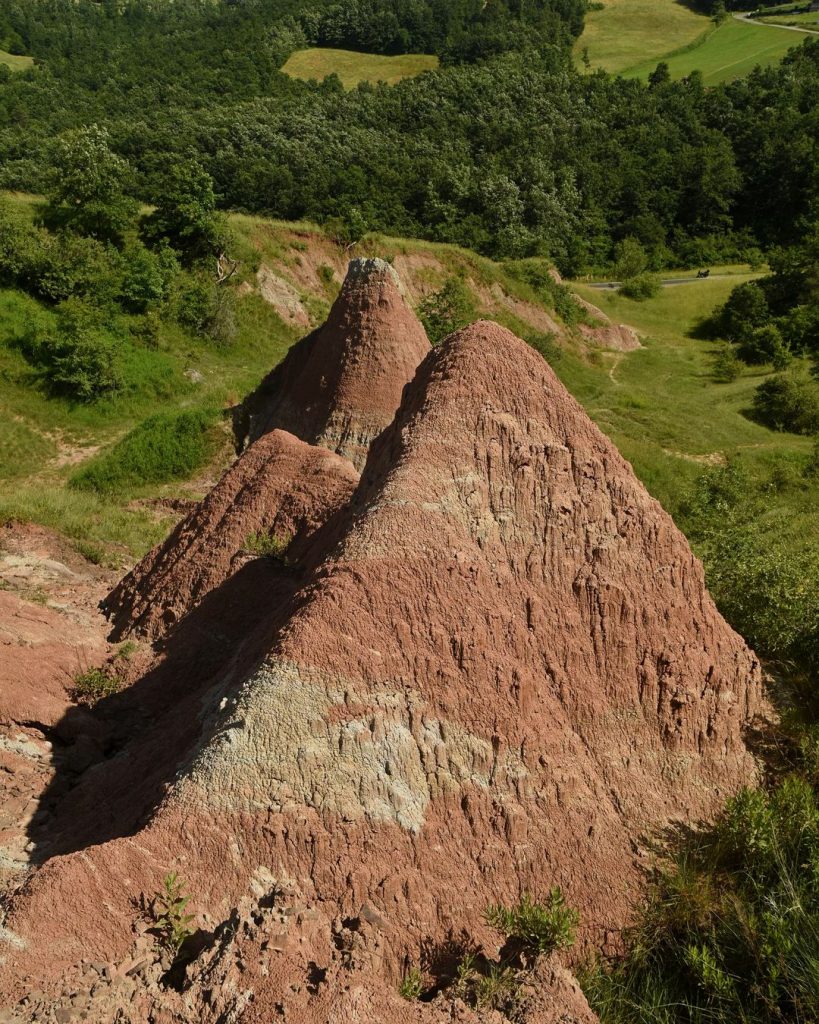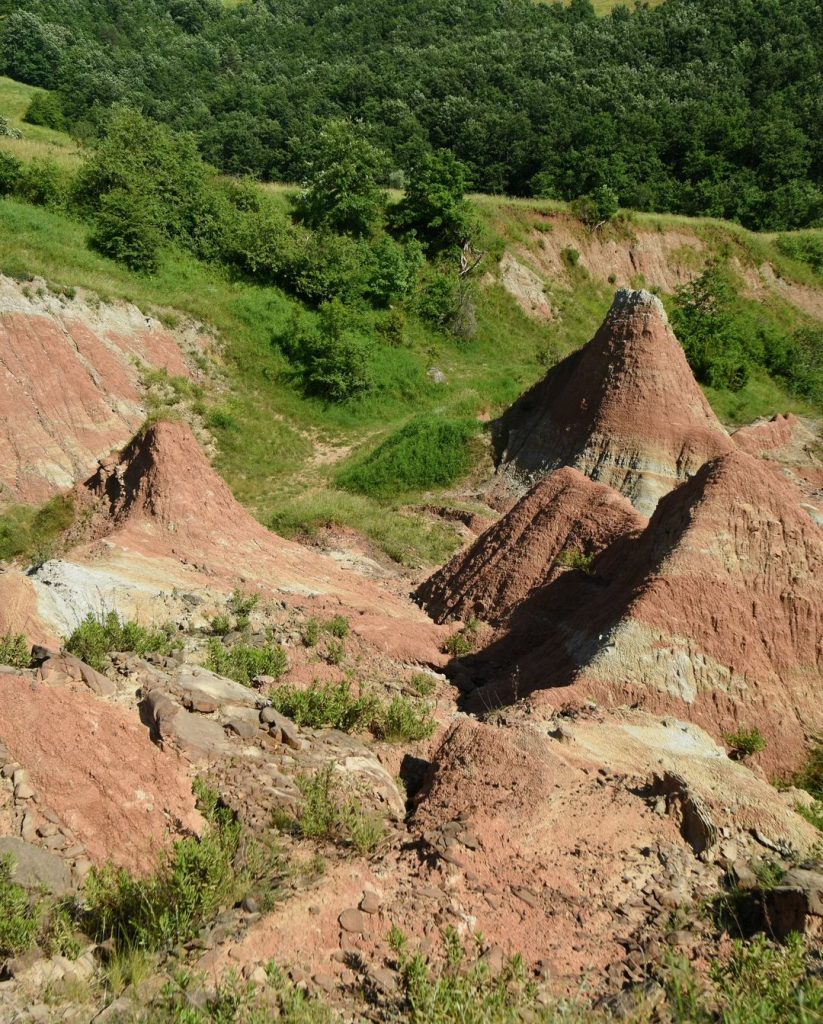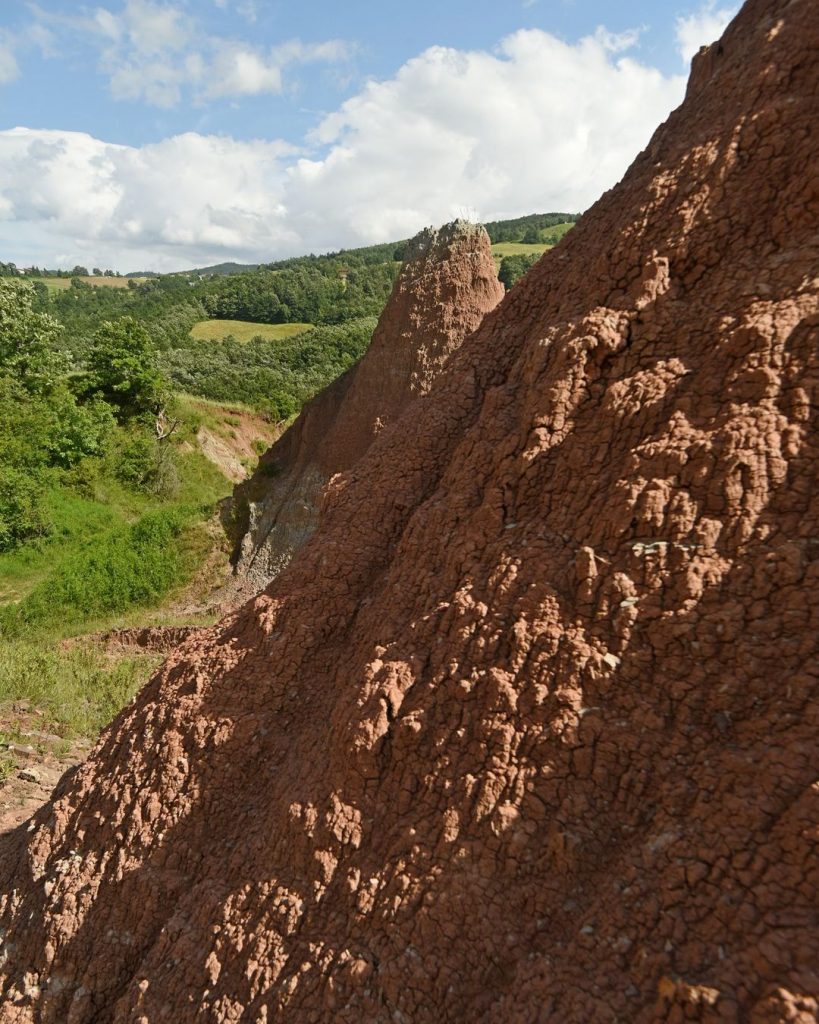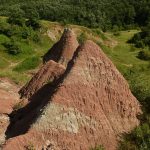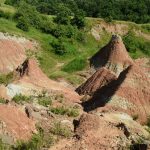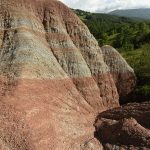Among its hills and Apennines, Emilia-Romagna hides some very special natural corners: extravagantly shaped rock formations that stand out from the surrounding landscape and are often the destination of excursions or, if possible, climbing.
Here are 6 of the most beautiful rock formations in Emilia-Romagna – some more famous, some less known – that are definitely worth a trip into nature.
Salti del Diavolo | Parma
In the upper Baganza Valley – between the villages of Cassio and Chiastre di Ravarano – are the Salti del Diavolo (Devil’s Jumps), a truly unique vertical rock outcrop.
It is a pointed, high and thin ridge that crosses the valley of the Baganza torrent for 5 km: spires and rocky peaks that suddenly emerge and rise dozens of metres above the surrounding landscape.
A legend from medieval times is linked to this place. It is said that a hermit lived here and that the devil tried to tempt him; the hermit defended himself by showing the devil a cross, and thec devil was so frightened that he flew off in a mighty manner that he moved the ground behind him, causing this sharp rock formation to emerge.

It is actually a very old sedimentary formation, probably of Cretaceous age, created by the disintegration of rocks from the Alpine arc, probably due to an underwater landslide. Although it is a conglomerate of different rocks, the visible part of the ridge is made up of sandstone, which has been used since ancient times by local stonemasons to create architectural elements such as the portals of the Pieve di Fornovo and Duomo di Berceto.
The Salti del Diavolo can be admired by following the Via degli Scalpellini (CAI path 771), the route used by stonemasons in ancient times to reach the quarries.
One of the most scenic spots to see is the Chiastra di San Benedetto, which can be reached from Cassio by taking the road to Selva del Bocchetto (SP104).
If you want to get close to the Chiastra, after about 300 metres turn right onto a cart road that reaches the first outcrop, where the vertical grooves known as the ‘devil’s nails’ are clearly visible.
To admire the Chiastra di San Benedetto from further away, in its entirety, we recommend instead to stay on the SP104: the spires will pop up on the right.
Parcellara and Perduca Stones | Piacenza
One of the symbols of the Trebbia Valley is Pietra Parcellara, which rises a few kilometres from Travo towards Bobbio. It is a small mountain (836 metres above sea level) that, due to the varying intensity of soil erosion, has remained alone to dominate the surrounding hills, from which it differs in morphology and colour.
Together with the nearby Pietra Perduca (547 metres above sea level), they form the most spectacular ophiolite complex in the province of Piacenza.
One of the peculiarities of Pietra Parcellara is that its appearance changes according to the point of view: from Travo it is round, from Perino it is pointed, from Cassolo it is flat and wide.

The recommended itinerary to visit it starts from Perino, following the CAI 167 path.
At the foot of Pietra is the Oratory of the Madonna di Caravaggio; from here the path begins that leads to the summit, from where you can enjoy a suggestive view of the whole valley.
Returning to the Oratory, you can walk along the CAI 185 path to Pietra Perduca.
Also in Pietra Perduca is an oratory dedicated to St. Anna, built in the 10th century and rebuilt at the beginning of the 16th century. The recently restored oratory is only open during the feast of St. Anne at the end of July.
Inside the sacred building there is a rock on which the footprint of the Madonna is said to appear, but the real peculiarity of this place is the presence of water-filled pools, probably dug in prehistoric times, where newts live and breed.

Bismantova Stone | Reggio Emilia
A large rocky massif with the profile of a ship at the foot of the Reggio Emilia Apennines: you may have guessed that we are talking about the famous Pietra di Bismantova, inside the Parco Nazionale dell’Appennino Tosco Emiliano.
The stone, which dates back to the middle of the Lower Miocene, is 1 km long, 240 m wide and 300 m high; its most peculiar feature is the plateau on its summit, from which a sheer wall descends, making it the most interesting and complete rock-climbing gym in the whole of Emilia Romagna.

The recommended excursion to discover it is the Sentiero Natura della Pietra di Bismantova (Bismantova Stone Nature Trail), a circular route of about 5 km, marked out by the CAI (Italian Alpine Club), which follows an ancient mule track dating back to the Middle Ages to reach the summit and then descends to the starting point, Piazzale Dante (more).
At the foot of the Pietra there is also an interesting Hermitage dating back to the 15th century, which testifies to the spiritual character that the local population has always attributed to the mountain.
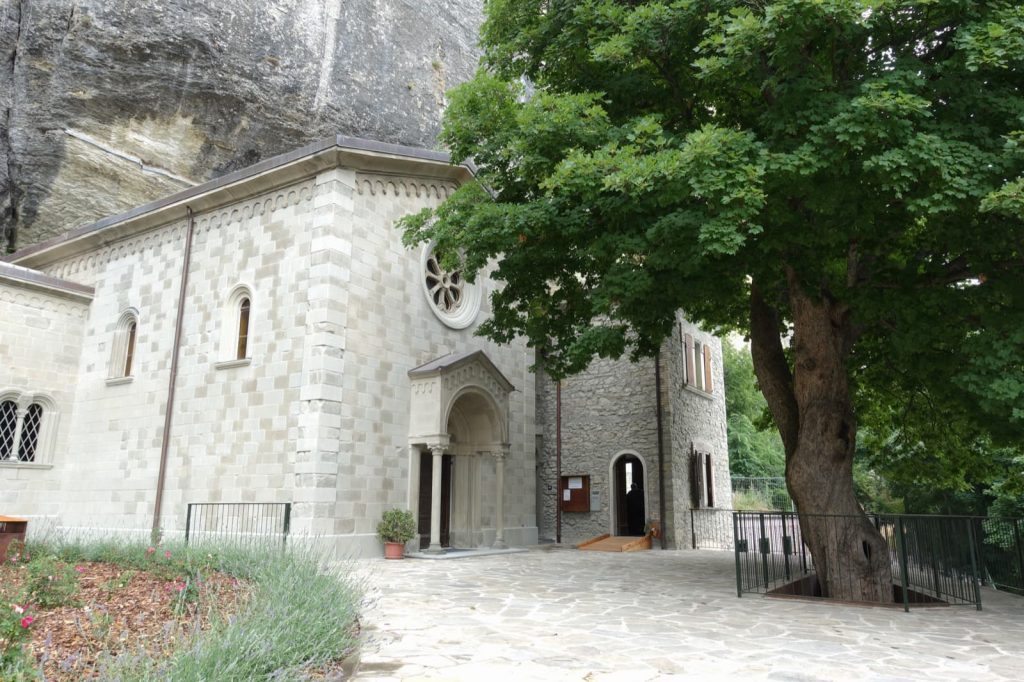
Canyon of Atticola di Vetto | Reggio Emilia
Let us stay in the province of Reggio Emilia, because perhaps not everyone knows that near the village of Atticola, near Vetto (a place in the Reggio Emilia Apennines known for being a natural balcony on the right bank of the river Enza), you can admire a small canyon.
It is a series of small volcanoes, only a few metres high, in an area of outcrops of red and white coloured ferruginous clay that almost look like sculptures.
An unexpected landscape, reminiscent of an alien planet or a miniature version of one of the famous overseas canyons.
Vetto (RE), Canyon di Atticola @danielabiavati70
Vetto (RE), Canyon di Atticola @danielabiavati70
Vetto (RE), Canyon di Atticola @danielabiavati70
Vetto (RE), Canyon di Atticola @danielabiavati70
Roccamalatina Spires | Modena
Pointed rock monoliths, over 70 metres high, that contrast sharply with the surrounding gentle countryside, covered with woods and vineyards. The sharp sandstone spires of Roccamalatina are true natural monuments, created by stratifications more resistant to erosion than the surrounding terrain.

The site is located in the natural park of the same name, which extends over more than 2,000 hectares along the Panaro river valley, between the municipalities of Guiglia, Marano sul Panaro and Zocca.
Characterised by a great diversity of habitats, the park is a historic nesting place for birds of prey such as the peregrine falcon and a wintering place for the rare wallcreeper.
For the more adventurous, there is a steep equipped path (with fee) that leads to the top of the panoramic Sasso della Croce (567 m), but there are also numerous itineraries through the protected area, for a total of over 100 km of paths (some of which can also be travelled on horseback or by mountain bike), including the Sentiero dei Ponticelli (Small Bridges Trail), ideal for a walk, even with children.
Varana Stones | Modena
In the Modenese Apennines, in the town of Varana Sassi and the nearby hamlet of Pompeano, there is another of the most beautiful rock formations in Emilia-Romagna. These are serpentine ophiolites of submarine volcanic origin, formed by magmatic eruptions 200 million years ago.
The Pompeano Ophiolite, on which the medieval Castle of Pompeano stands, is crossed by a fault that has given rise to a long cave of about 30 metres, which can be visited with the CAI speleological group of Modena during the first weekend in August, on the occasion of the town’s festival.
The Varana Stones, on the other hand, are famous for being an excellent natural gym for practicing rock climbing. However, it is also possible to climb the Sassi in the “traditional” way, following a path dug into the rock that leads to a green plateau with a splendid view.
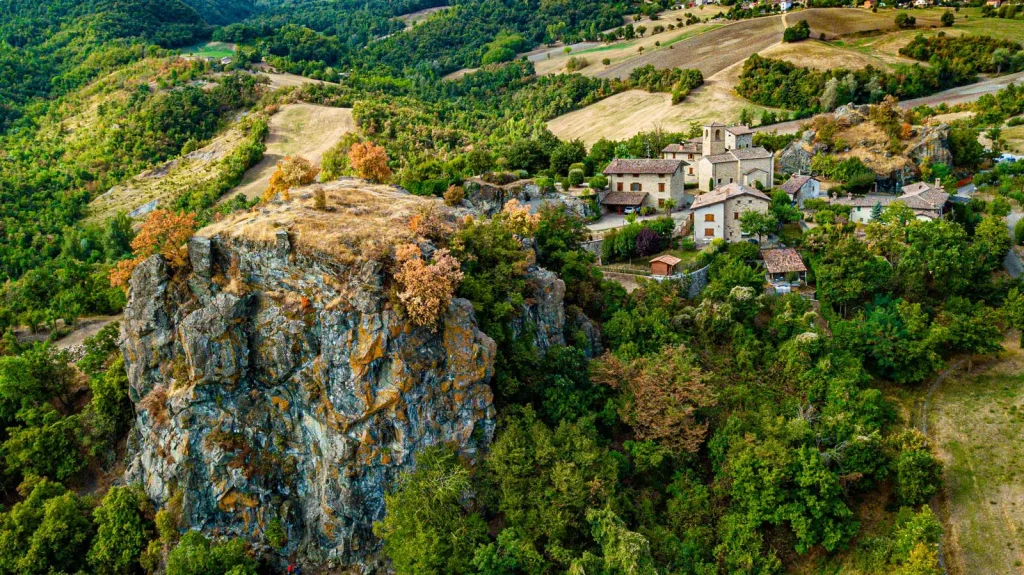
Author

Elisa Mazzini
Social Media Manager for @inEmiliaRomagna and full-time mom.
You may also like
The most unusual places created by nature in Emilia-Romagna
by Maria Grazia Masotti /// October 25, 2023
5 natural spots to discover in Emilia-Romagna
by Elisa Mazzini /// September 19, 2016

Interested in our newsletter?
Every first of the month, an email (in Italian) with selected contents and upcoming events.
